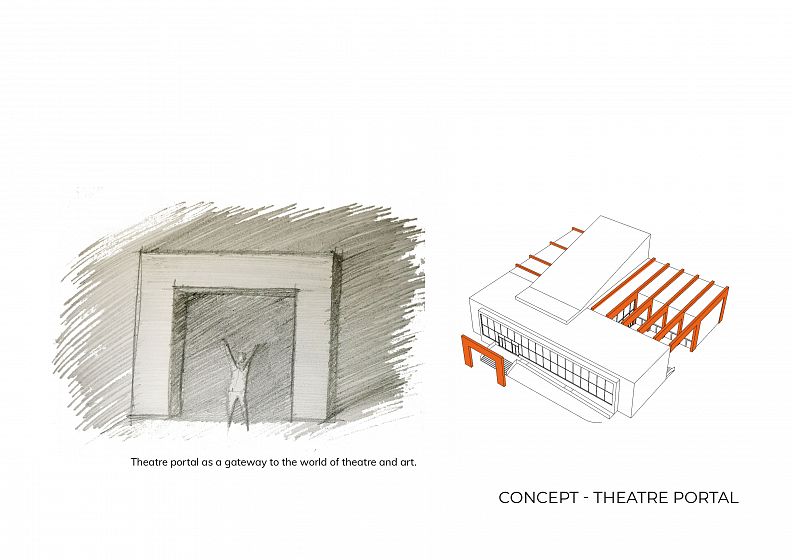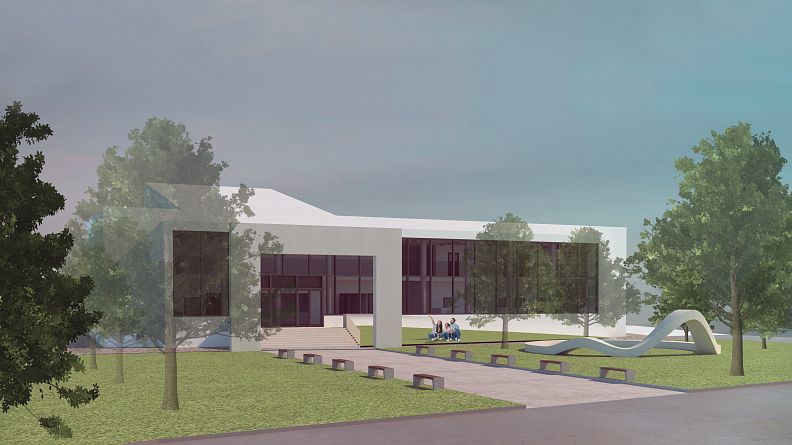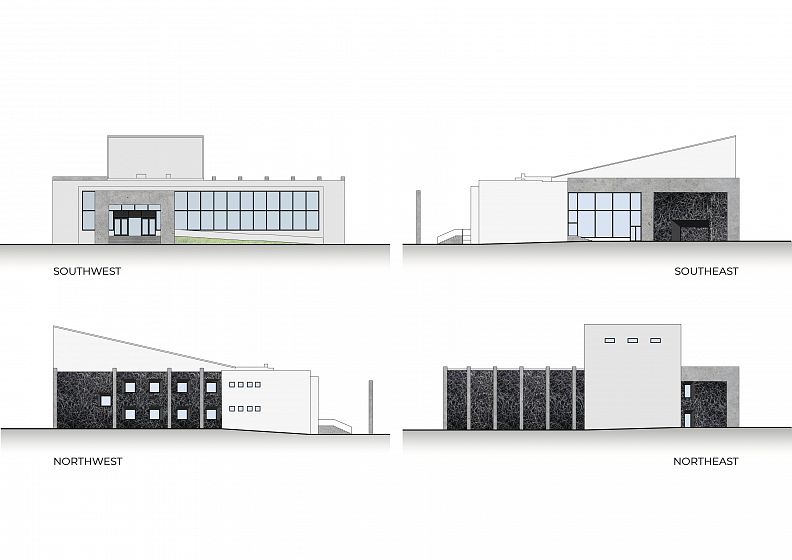Transformation of the 20th century house of culture into the 21st century community center

Project idea
The transformation of the Přibyslav House of Culture aims to transform the existing building into a community center with a focus on the theatrical functions of the building. The thesis assignment focuses on the approach to the Houses of Culture built during the second half of the last century in the Czech Republic. It deals with the design of a material solution that responds to the requirements of the building operator and today’s demands for this typology. Also, the thesis deals with a solution to the interior and exterior of the building.
Project description
The assignment is based on the question of how to deal with the cultural heritage of the post-war period in the Czech Republic. His thoughtless condemnation and destruction as remnants of the communist regime now seem like an inappropriate solution. This period is typical of a high unification rate. However, it is still possible to find buildings whose authors have tried to create unique works of architecture, despite the difficult political situation. These include Houses of Culture, which are one of the most widespread typologies. It is precise because of their expansion and political background that they are often negatively perceived. If we exempt from the idea of a cultural house as a tool of propaganda, we can find architecturally high quality and remarkable buildings that illustrate the development of construction in the Czech Republic after The Second World War.
The House of Culture in Přibyslav was built in the 1960s according to the design of architect Milan Šavlík. Despite the fact it was built by the inhabitants of the city itself during the so-called "action Z", this building construction was well made. Today, however, it no longer meets technical or operational requirements, and therefore its transformation is necessary.
Despite the relatively small number of inhabitants, Přibyslav provides a rich cultural offer and there is a rich cultural life. In addition to many smaller events, the theatre festival "Divadelní Přibyslav" takes place every year and there are amateur theatre associations and puppet theatre.
The concept is based on the theme of the theatre portal as a gateway to the world of theatre and art. The portal is displayed in the project as large concrete frames, which form a grid following the existing load-bearing elements. This creates a connection between the new and the old. These frames are visible not only in the exterior but also in the interior.
Technical information
The current main building with foyer and the hall with elevation are preserved and reconstructed. The longitudinal tract with the extension is replaced by a flat hall, which is connected to the main building. On the other side of the current hall is proposed an extension with changing rooms and administration. Individual objects - current and new - admit their age and contrast each other in the exterior and interior.
The open-air space is connected to the object through a glass wall of the café. The summer scene also naturally blends into the flat hall. These spaces can be connected or separated by glass doors between the portals. It creates a very flexible space.
The principle of elevation used in the current object was also applied to the new parts. The flat hall is connected to the main building by the café space, which follows the declination of terrain. This makes the new flat hall wheelchair accessible.
The facade of new parts of the building is designed from black painted concrete panels. It can be considered a slightly theatrical gesture, but it visually refers to the dark environment of the stage, which comes to life only with the movement of artists on its boards. The wildness of the movement theme is soothed by concrete portals, which clearly define the space "to move".
The proposal strengthens the wider city center and creates an environment for new activities in the town. The building is located on the site with a diverse structure. The transformation of this object seeks to calm these circumstances. The mass accentuates the neighboring castle and its parterre connects to the gardens with which it is surrounded. In the foreground, there is a large entrance portal and a sculpture inspired by the Loop project from FAHR 021.3 studio.
The contribution of this work is to open a debate on the fate of cultural houses built during the post-war period in the Czech Republic and to present one of the possible approaches to transform these objects for the needs of today.
















